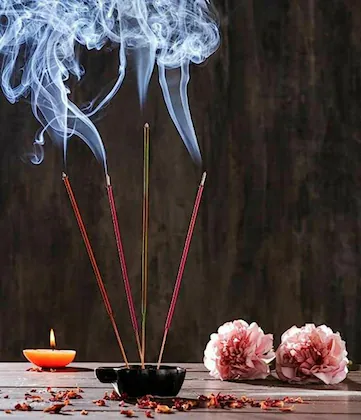Step into any Indian household, and there’s a high chance you’ll be greeted by a thin swirl of fragrant smoke curling through the air—courtesy of incense sticks, or agarbattis. Whether it’s an early morning puja, a calming yoga session, or just chasing away the post-lunch slump, incense sticks have become a near-ritualistic presence in everyday Indian life. But behind this scent-sational experience lies a robust, traditional, yet evolving industry that has placed India on the global aromatic map.
History of Incense Sticks Indian Culture
Let’s rewind a bit—incense isn’t a new fad. It has roots in India’s Vedic traditions, where burning herbs and fragrant woods like sandalwood and frankincense was integral to rituals. Over centuries, these practices became more accessible with the invention of agarbattis—convenient, compact, and consistent in their scent throw.
The Ingredients of Incense Sticks: Earth Meets Ether
Indian incense is usually made with a combination of natural ingredients, making it a blend of earthy simplicity and spiritual subtlety. The base paste typically includes:
- Bamboo sticks (usually sourced from Northeast India)
- Charcoal or wood powder (acts as a binder)
- Jigat or Litsea glutinosa bark powder (traditional binder)
- Essential oils and aromatic compounds like sandalwood, rose, jasmine, patchouli, or even synthetic fragrances for budget variants
Today, you’ll find variants made from resins like frankincense, guggul, or even camphor—all catering to specific spiritual or therapeutic purposes.
How Incense Sticks are made: A Handmade Harmony
Here’s where things get beautifully labor-intensive. Despite the tech era, the majority of incense sticks in India are still handmade, especially in cottage industries. The process looks something like this:
- Paste Preparation: Powdered ingredients are mixed with water to form a thick, pliable paste.
- Rolling: The paste is hand-rolled onto thin bamboo sticks—a skill passed down generations, especially among women workers in rural India.
- Drying: The sticks are sun-dried, often laid out on large mats under the open sky.
- Fragrance Dipping: Once dry, they’re dipped into a fragrance oil solution.
- Packaging: The final product is bundled, wrapped, and branded—ready to scent homes across the globe.

The Workforce: Women-Led, Rural-Powered
Here’s a real talking point: over 70% of the workforce in India’s incense stick industry are rural women. This industry has empowered thousands of women with steady incomes through low-barrier skill training. In many states like Karnataka, Tamil Nadu, and Odisha, this isn’t just cottage industry—it’s community development in action.
Market Size: Small Stick, Big Bucks
India is the largest producer and exporter of incense sticks in the world. According to industry data:
- The Indian incense market was valued at INR 7,000+ crore in 2023.
- Major export destinations include the USA, UAE, Malaysia, and European countries.
- There’s growing demand for eco-friendly and premium variants—think handmade organic agarbattis with sandalwood, saffron, and even oud.
Innovation in the Air
While the fundamentals remain rooted in tradition, the sector is ripe with innovation:
- Machine-made incense sticks have emerged for mass production.
- Fragrance layering and essential oil infusion are used in luxury brands.
- Marketing pivots now target not just religious uses but wellness, meditation, and even mosquito repellent applications.
- Sustainable packaging and carbon-neutral branding are becoming key differentiators for startups.

Challenges? Oh Yes, But Opportunity Too
Like any cottage-to-corporate industry, the agarbatti world isn’t without hiccups:
- Raw material cost fluctuations (especially jigat and natural oils)
- Over-dependence on manual labor
- Imitation Chinese imports that have disrupted the pricing game
However, post-2020, the Indian government placed restrictions on incense stick imports, reviving domestic players and boosting the “Make in India” mission.
The Bottom Line: More Than a Scent
The incense stick isn’t just a piece of perfumed bamboo—it’s a thread that ties together spirituality, sustainability, self-employment, and solid exports. For entrepreneurs and conscious consumers alike, it offers a business opportunity that literally sells itself on aroma.
So the next time you light an agarbatti, know that you’re inhaling a legacy—hand-rolled, sun-dried, and steeped in Indian ingenuity.
